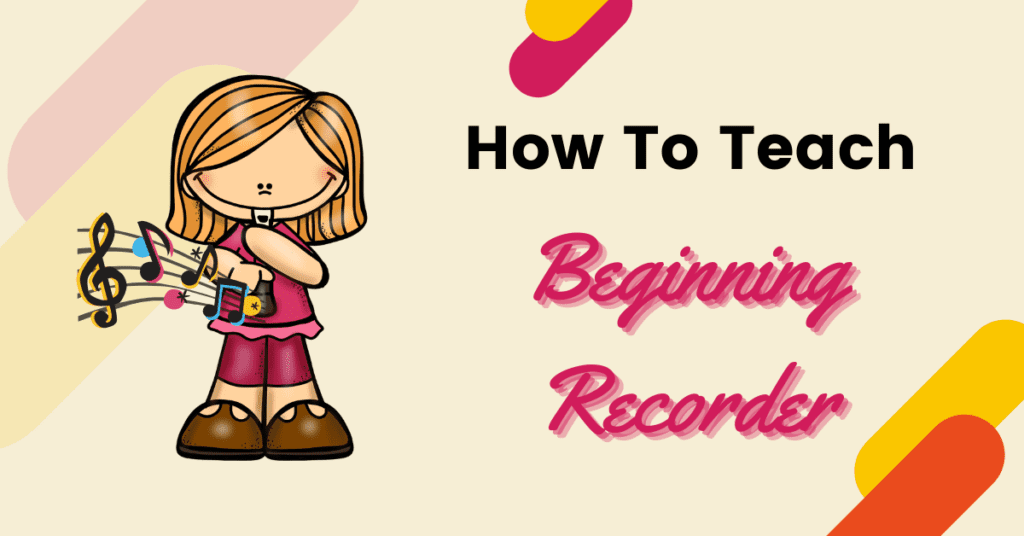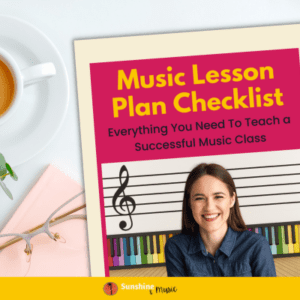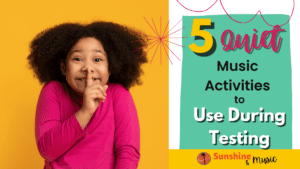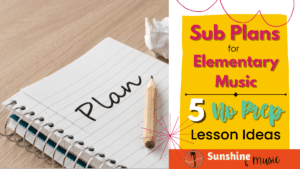Hello Readers! This is the time of year when I start up recorders with my third graders. But it took many years for me to figure out how to teach beginning recorder successfully.
Recorders often get a bad rap.

But if taught well, you can minimize the torture element that comes with beginning recorder and make it a process where students are successful and learn to play with good tone. Here are some of the tips that I have learned over time that help create a smooth learning process.
Focus on Fingers
Before my students ever put a recorder in their mouth, we have a couple lessons where we focus on holding the recorder correctly and how to put fingers over the holes. Students think that recorder playing is all about the air, since you blow air in and then sound comes out. But really, recorder is all about the fingers. The air is just the icing on the cake. So students have to EARN the ability to use air on the recorder by showing me that they can handle the most important element – correct fingers (and left hand on top).
Dynamite by Taio Cruz
I use this song to teach about left hand on top. During the verses, students dance around the room. Then, when the chorus hits (“I put my hands up in the air sometimes”) everyone must freeze and hold their recorders up in the air. And of course, they don’t get to hold them any which way. They have to hold them with the left hand on top. I go around the room, letting kids know if they are holding the recorder correctly, or if they need to switch hands or fix something else about their grip. Then the chorus ends and we all go back to dancing. It’s a fun way to kick off recorders.
You can also have kids hold up their recorder and show you a certain fingering once they learn some of the different notes.
Take It Slow
BAG seems super simple. It’s literally as easy as one – two – three (fingers). But it ISN’T that easy for brand new recorder players. They aren’t just thinking about fingers. They are trying to figure out how to hold the recorder and how exactly to put their fingers correctly over a hole and how much mouthpiece goes in their mouth and how much air to blow and how to use their tongue correctly, etc. So I teach B and focus on just that one note and getting good tone before we add anything else. Then we focus on just A. Then B and A in the same song. Then just G, then BAG.
I know that it seems like this would be really, really dull. But 1) students don’t find success to be dull. If you blast them off too fast they are just going to get frustrated and everyone will sound awful and 2) there are some great bits of literature out there that help jazz up simple songs that use just one note. I love a source called Recorder Revolutions. It’s a book/CD and also a SMARTboard resource.
Do More Than Just Read and Play
Another way to keep BAG from getting stale is to do more than just read and play the notes. Try improvising (here’s an activity where I have my kids improvise on BAG to the book Charlie Parker Played Bebop). Or have your students compose a song using BAG. I have my students create a new ending to the song Hot Cross Buns. The more ways that you interact with the notes, the better the students are going to learn them. Some other ideas include:
- “translate” the notes (teacher sings a pattern using solfege and students echo it back playing it on recorder). Or take it up a notch and sing on a neutral syllable and see if they can still translate.
- add other instrument parts – xylophone borduns or unpitched percussion or both. You can even add a movement part to a song too. This is great for assessments. One group can play (and be assessed) while the other groups do the dance moves and unpitched percussion. Then swap out.
- mix up the song by putting the measures in a different order and see if the kids can still read it correctly. This will show you who memorized the notes and who is actually reading the patterns.
And those are just the things that I could come up with off the top of my head. I’m sure you guys could think of many more.
Take the Low Path
Two roads diverged in a yellow wood, and I – I took the one less travelled by. And that has made all the difference. – Robert Frost
I feel like Robert Frost’s poem gets to the point here. After BAG, there are two paths that people tend to take in terms of what notes they teach next. Many people head off to high C and D, and others teach low E and D. I guess I don’t actually know if the path to low E and D is the path less travelled by (although based off the recorder music out there it seems harder to find songs with just BAGE and D in them), but I will say that it has made all the difference in the tone that my students use on recorder. You can read more about my switch to low E and D in this post here:
Let’s Get Low – Adjusting My Recorder Teaching
Set Your Expectations
So most of this post has been focused on ways to teach recorder playing skills. But if you are looking to teach recorders and keep your sanity, then I feel that a mention needs to be made about teaching NOT PLAYING skills. As in, the expectations of when their recorder should NOT play. Just like I imagine many of you teach that mallets go on your shoulders when you are not playing the xylophones, you might have some sort of rest position that the recorders come to at the end of a song. And consequences for those that play out of turn. I have a recorder time out. Students put their recorder there and they can pick it back up when my time out timer goes off (I usually start at at 2:00 for first offense and then move it up as needed).
If students are aware of the consequences and if you follow through consistently, you will get a lot less complaining when they do get told they have to put their recorder in time out. It’s not personal, it’s just what happens when they play out of turn.
You may choose to do something completely different, and that’s totally fine. But just have a plan for when recorders should and shouldn’t play and what the consequence will be be if that expectation is not followed and you will preserve so much more of you sanity.
And there you have it. Some of my biggest tips and tricks on how to teach beginning recorder in a way that smooths over that beginning process. I hope they help. Good luck!!







